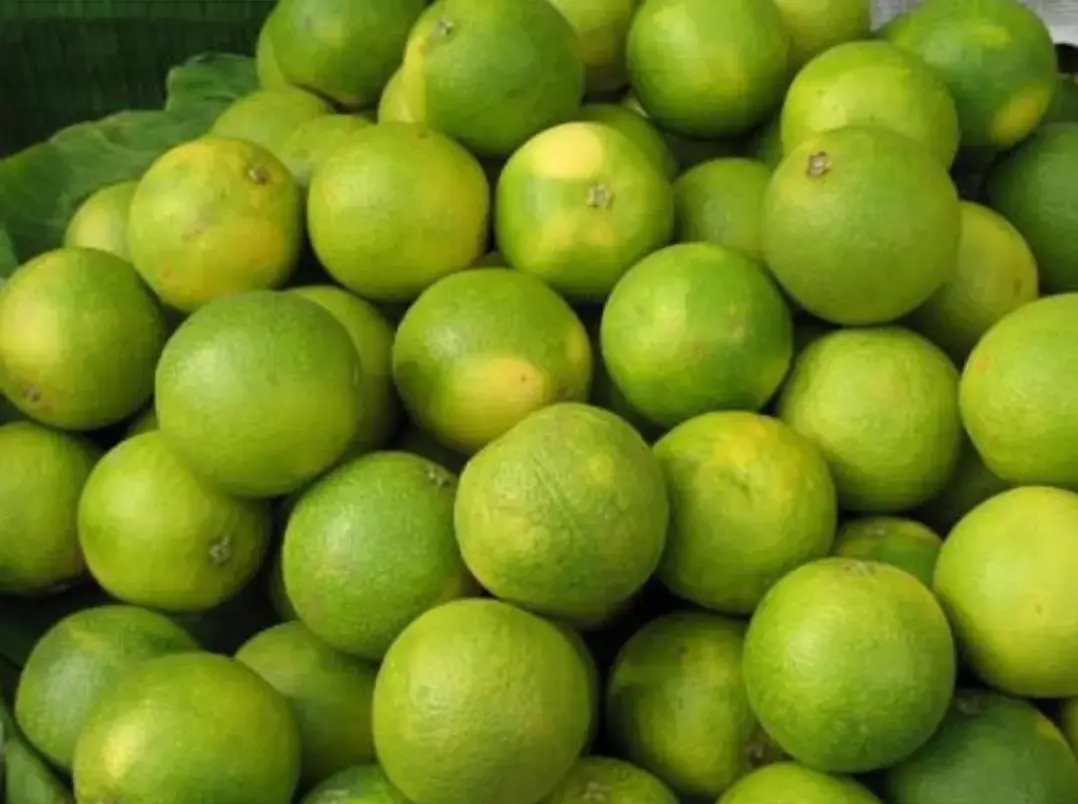
Appearance:
Color: The rind of a Mosambi is typically green when unripe and gradually transforms to a blend of yellowish-green to pale yellow hues as it ripens. It rarely turns a vibrant orange like some oranges.
Shape: It's generally round to oval-shaped, similar in size and appearance to a common lime, usually averaging about 7 centimeters in diameter.
Skin: The skin is medium-thick, leathery, and smooth, though it may have a slightly lumpy exterior with many small, prominent oil glands. Scratching the surface releases a distinct citrus aroma.
Flesh: The inside consists of pale green to light yellow pulp-filled sacs, divided into 8-10 segments by thin membranes. It contains numerous cream-colored seeds.
Flavor Profile & Aroma:
Taste: The defining characteristic of Mosambi is its mildly sweet flavor with very low acidity, which sets it apart from sour lemons or limes. It has a subtle, refreshing taste, sometimes described as a blend of sweet and mild-tart. Unlike most citrus fruits, its juice can turn slightly bitter if left exposed to air for too long after juicing.
Aroma: It possesses a fresh, pleasant citrus aroma, though less intense than some other citrus fruits.
Texture:
Flesh: The flesh is soft, juicy, and succulent, with a good amount of pulp. It's generally non-fibrous, making it pleasant for direct consumption.
Juiciness: Mosambi is highly prized for its high juice content, making it a very popular choice for fresh juices.
Size & Weight:
Typically small to medium-sized, weighing around 150-300 grams.
Seasonality & Availability (in India):
Mosambi is widely available in India and often has two main seasons: a summer crop (April to June/July) and a winter/early spring crop (November to March). This makes it a relatively accessible fruit for much of the year.
Other Notable Characteristics & Uses:
Hydration: Due to its high water content, Mosambi juice is a popular and excellent hydrating drink, especially during hot climates like Kerala's.
Health Benefits: It's a powerhouse of nutrients, particularly Vitamin C, which boosts immunity, aids digestion (due to fiber and natural acids), promotes skin health, and can help in conditions like scurvy. It also contains potassium, magnesium, and other beneficial compounds.
Digestive Aid: It's often recommended for digestive issues as it helps stimulate digestive enzymes and can soothe conditions like indigestion and nausea.
Culinary Versatility: While predominantly consumed as fresh juice (often with a pinch of black salt or chaat masala in India), it can also be:
Eaten fresh, sliced as a snack.
Used in fruit salads.
Added to dressings, marinades, and sauces.
Used in traditional desserts, jams, and sorbets.
Less Acidic: Its low acidity makes it a gentler option for individuals with sensitive stomachs or acid reflux compared to more acidic citrus fruits.
In essence, Mosambi is a beloved and refreshing citrus fruit in India, cherished for its unique mild sweetness, abundant juiciness, and numerous health benefits, making it an ideal choice for a hydrating and nutritious beverage.

